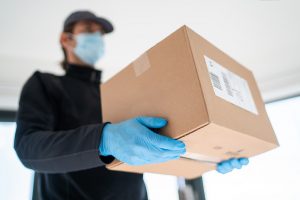So, you have the business, the staff, the customers and even the budget. Good to go right?
Not quite.
When it comes to order fulfilment, as a business it is imperative to make sure that you know each step and what to do from the enquiry stage right up until the product is in the customers hand.
The first step is taking the order. So, let’s use our business for example. We are Leicester based and receive an inquiry over the phone or a web lead, we would then make sure that the person responsible for taking the order enters all the information correctly into an online system and sent off to the right department for processing.
At the other end of our fulfilment centre in Leicester, we would process the order and get the inventory being stored, ready for fulfilment. This would consist of making sure the order is processed correctly and the customer is updated with their status of their order, so they are always in the know. They should know that their order has been placed and is now processing. This could even include an approximate arrival date which would give the client the best order fulfilment as possible.
Whether you use on-site or a third-party source, picking the inventory is a very key part of fulfilling a order as there is no room for error. Using the correct picking methodologies is vital for the process of fulfilling orders and they can include batch picking, cluster picking and zone picking.

Once the product has been picked and is due to dispatch, it is ready to be weighed and packed as well as labelled which is a part of inventory process that must occur before shipment. Different products will determine what time of steps which are involved as items such as pens, and paper compared to washings machines and TV’s will have a completely different process. Items heavier and more worth will have more of a stricter preparation process and intricate steps.
Shipping the order can involve sending the order directly to the customer or there may be distribution points along the way. Food items will need to be shipped in a refrigerated or humidity-controlled environment to ensure the highest quality.
Shipping managers/controllers will decide what Is the safest and most efficient way to ship an item that will drive sales higher and leave you in a good stead. As a fulfilling service, we would have a system in place to track and trace each product throughout the entirety of the processes from shipping to delivery to when the items ordered reach the customer.
By keeping the customers updated in the shipment of their delivery, it has the psychological effect as it gives the customer a sense of control of where their product is and what time roughly it should be arriving.
The last step would be handling any order returns. A shipment that has been returned needs to be checked for any damage and returned to the inventory. It is vital to stay in contact with the customer throughout the process to ensure the best possible service is provided and to get to the root of the issue of why it Is being returned. Return policies should be clearly posted on ecommerce websites. It should be clear when refunds are given when only credits or replacements are given, and what the time limits are for receiving each of these.




